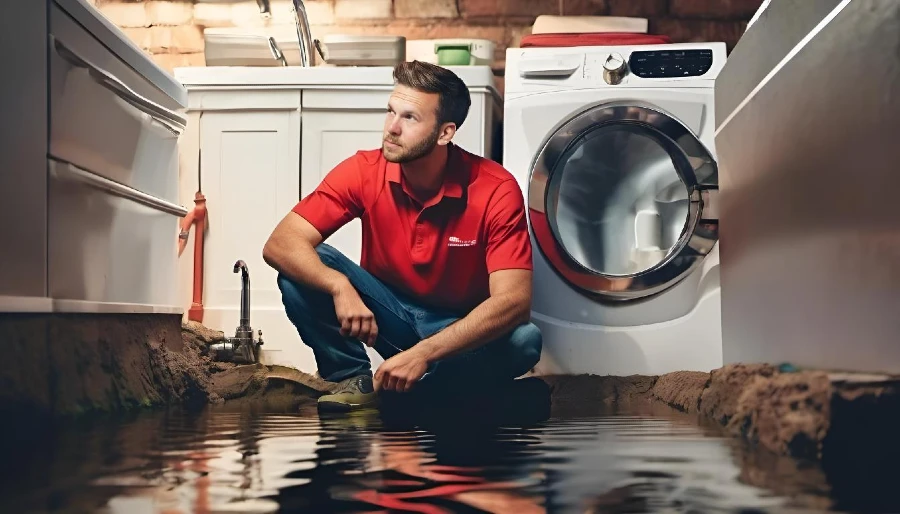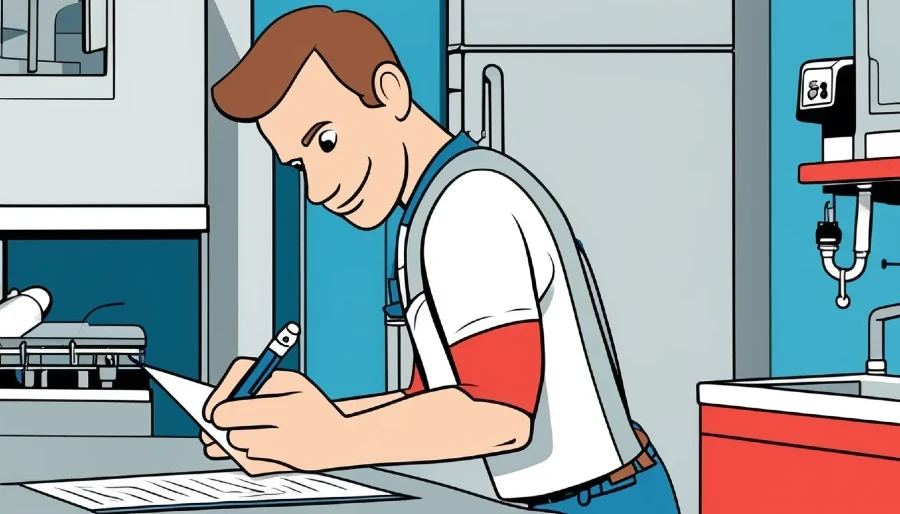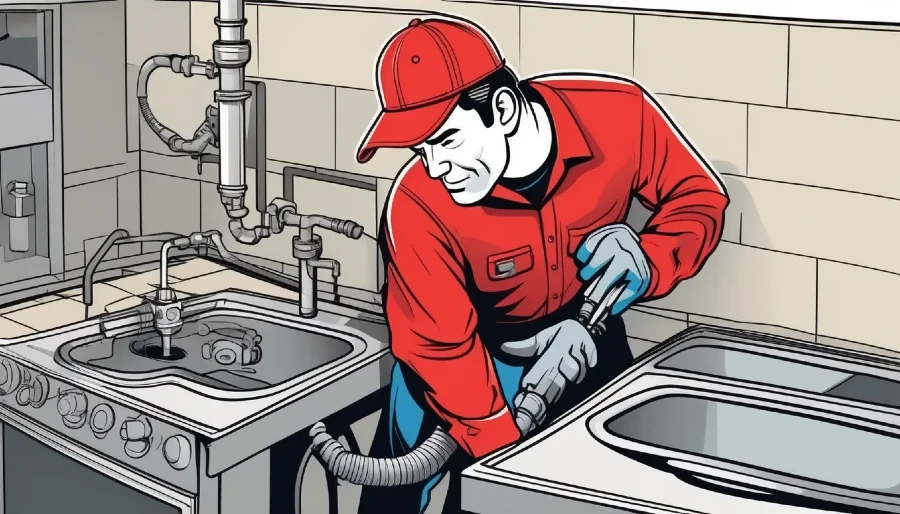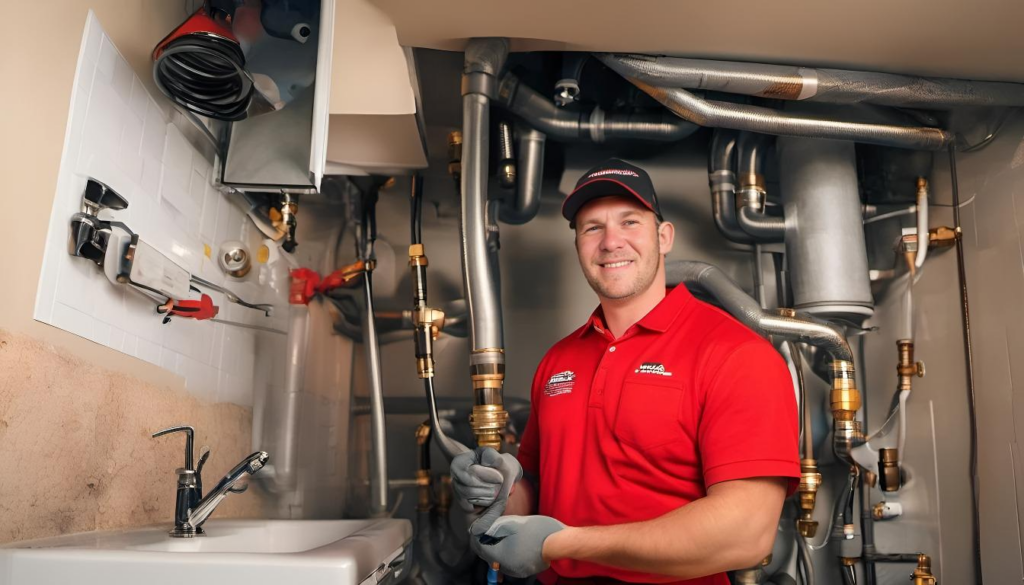Basement Drain Backing up When Washing Clothes
Basement drains are a crucial part of your home’s plumbing system. They help direct water away from your home, preventing potential water damage. However, issues can arise. One common problem homeowners face is a basement drain backing up when washing clothes.
This issue can be frustrating and confusing. Why does the basement drain backup coincide with laundry cycles? What’s the connection between your washing machine and the basement drain?
In this article, we’ll explore these questions. We’ll delve into the workings of basement drains and their connection to your washing machine.
We’ll also discuss common causes basement drain clogged, signs to look out for, and troubleshooting tips. Plus, we’ll provide preventative measures to help you avoid future backups.
By the end, you’ll have a better understanding of your home’s plumbing system and how to keep it functioning smoothly.
Understanding Basement Drains and Washing Machine Connections
To understand why your floor drain backing up while doing laundry, you first need to know how basement drains work. These drains are typically connected to the main sewer line. Their primary role is to transport wastewater away from your home.
This keeps your basement dry and free from potential water damage. Basement drains are also an essential feature for homes with laundry facilities downstairs. When you run your washing machine, the water generated from the cycle is directed into the basement drain.
Given the volume of water discharged during laundry, the basement drain needs to be clear. Blockages in this system can quickly lead to backups. This can cause water to pool in your basement, leading to further complications like mold growth.
Understanding this relationship can help you identify the root of the problem when issues arise. Now, let’s delve deeper into the specific mechanics of basement drains and their connection to your washing machine.
How Basement Drains Work
Basement drains are connected directly to the house’s main sewer line. This connection facilitates efficient water disposal. Water from various sources, including sinks and washing machines, finds its way to this drain.
The design ensures that waste water leaves your home without causing flooding. It must handle significant water volumes, especially during laundry cycles.
Regular maintenance of these drains is essential. Proper maintenance helps prevent clogs and unexpected backups, keeping your basement dry and safe.
The Connection Between Your Washer and the Basement Drain
Your washing machine is directly linked to your plumbing system. Water from the washing machine is expelled through a hose into a standpipe or laundry tub.
From there, it flows into the basement drain. A properly installed washer drain pipe is crucial for efficient water flow. Incorrect installation or size can lead to slow drainage and the washer drain pipe backing up.
When these systems function together seamlessly, they prevent water from backing up into your basement. Understanding this connection can help identify issues before they become significant problems.
Common Causes of Basement Drain Backups
Basement drain backups can be an annoying and costly issue for homeowners. Understanding the common causes can help prevent future headaches. Several factors contribute to this problem, with clogs and blockages being the main culprits.
In addition to clogs, sewer line issues often play a significant role. These issues can be complex and may require professional intervention. Finally, washing machine overloads are another frequent source of trouble.
Here are some common causes of basement drain backups:
- Clogs and blockages from debris and grease
- Sewer line damage or intrusion by tree roots
- Overloading the washing machine with too much water
Let’s explore each cause in more detail, starting with clogs and blockages.
Clogs and Blockages
Clogs and blockages are among the top reasons basement drains back up. Debris, hair, and soap scum can accumulate in pipes over time. These materials gradually narrow the passageway, obstructing water flow.
Grease is another common offender in creating clogs. When grease cools down, it hardens within the pipes, leading to blockages. To avoid these issues, ensure you don’t pour grease down your drains.
Regular cleaning and maintenance can significantly reduce the risk of clogs. Ensuring your drains remain clear helps prevent backups.
Sewer Line Issues
Sewer line problems can also lead to basement drain backups. Tree roots are a frequent cause of these issues. They can enter sewer lines through small cracks, causing damage over time.
Old or damaged sewer lines are more susceptible to issues. Cast iron and clay pipes are particularly prone to worsening over time. Regular inspections can identify issues early, allowing for timely repairs.
Professional plumbers can perform camera inspections to diagnose sewer line problems. Early intervention is key to preventing extensive damage.
Washing Machine Overload
Overloading your washing machine can stress your drainage system. Large laundry loads produce significant amounts of wastewater. This rapid influx of water can overwhelm the basement drain, resulting in a laundry drain backing up.
It’s important to note that washing machines should be used within their capacity limits. Regular overloading may lead to backups that damage your basement. Spacing out laundry loads can help prevent undue strain on your drainage system.
Following the manufacturer guidelines for load size can mitigate this issue. By doing so, you can keep your basement dry and your machine running efficiently.
Signs of a Basement Drain Backed Up
Identifying signs of a drain in basement backing up early can prevent more severe damage. One of the first indications is water pooling around the drain. This standing water suggests your drainage system isn’t functioning properly.
Another common sign is slow drainage. If water takes longer than usual to disappear, a backup might be developing. You may also notice that your washing machine drains poorly, a clear indication of a potential issue.
Unpleasant odors are also a telltale sign of a drain problem. Foul smells coming from your drains often signal trapped waste material. This waste can become a breeding ground for bacteria and mold if left unchecked.
You might also hear gurgling or bubbling noises from your basement pipes. These noises occur when air is trapped in the system due to clogs. Listening for these sounds can provide an early warning of a developing backup.
Lastly, watch for seepage or dampness on basement floors or walls. This moisture might not always be obvious, but over time, it can lead to damage. Addressing these symptoms promptly can save time and money on repairs.
Troubleshooting Your Drain Backing up in Basement
When faced with a basement drain backup, quick action is critical. Begin by assessing the situation to understand what’s causing the problem. Start by checking if all drains in your home are affected.
List out the areas where water is backing up. This can include sinks, toilets, and laundry drains. Knowing where the problem is prevalent helps narrow down the location of the blockage.
Take note of any noticeable changes in water flow. Observe whether water drains more slowly than usual. These details aid in diagnosing the underlying issue accurately.
Next, inspect for visible debris or blockages in the areas you suspect. Check drain covers or filters and remove any obvious obstructions. Sometimes, clearing surface blockages can resolve minor issues effectively.
Assess the water level in your basement drain. A higher water level might indicate a main line clog. If the water level remains constant, consider a blockage further down the line.
Use a plunger to try and dislodge small clogs. This simple tool can be surprisingly effective in many cases. Ensure you have a tight seal around the drain for maximum suction.
If plunging doesn’t work, consider using a drain snake. This tool can reach deeper clogs and provide a more thorough clean-out. It’s a valuable addition to any homeowner’s toolkit.
Should you not have a drain snake, chemical or enzymatic cleaners might help. Follow instructions carefully, as improper use can damage pipes. Enzymatic cleaners are gentler and environmentally friendly.
Observe your washing machine for signs of improper drainage. A malfunctioning washer can exacerbate basement backup issues. Inspect the connecting pipes for signs of damage or blockage.
If these measures fail to resolve the backup, it may be time to seek professional help. Complicated or recurring issues often require expert assessment.
Step-by-Step Guide to Diagnosing the Problem
Begin diagnosing by checking your home’s plumbing layout. Understanding where pipes run can offer clues for locating the blockage. This knowledge is essential for effective troubleshooting.
Next, confirm whether the issue is isolated to the basement. Check if fixtures elsewhere in the house are working normally. This can help determine if the issue is with a specific drain or the main sewer line.
Observe the flow of water from your washing machine. Note if it backs up or drains slowly. This is a useful indicator of a backup issue.
Feel for vibrations or hear gurgling noises in the pipes. These are signs of air trapped by a blockage. These sensory cues can guide you to the problem’s source.
Finally, inspect outside for any visible issues with sewer cleanouts. Ensure they aren’t clogged, as this can lead to basement drain problems. This outside access point can help identify broader sewer line issues.
Clearing Minor Clogs Yourself
When tackling minor clogs, safety and careful handling are key. Always wear gloves and protective eyewear to avoid exposure to wastewater. Safety should be your first consideration.
Begin with a plunger to dislodge basic clogs. Use a steady, rhythmic motion to create suction. This simple method often resolves smaller issues.
If a plunger is not effective, consider using a drain snake. Feed the snake slowly into the drain, rotating to catch debris. This can reach clogs deeper within the pipes.
Enzymatic cleaners are another option for clearing minor blockages. These products are designed to dissolve buildup naturally. They pose less risk to your plumbing system compared to chemical cleaners.
If you’re using chemical cleaners, exercise caution. Follow all product instructions and ventilation guidelines. Misuse can lead to damaging pipes or creating toxic fumes.
When to Call a Professional Plumber
Sometimes, a drain issue is beyond a DIY solution. Knowing when to call in a professional plumber is essential. Indicators include severe or recurring backups that resist basic clearing attempts.
If you find multiple fixtures in your home affected, it suggests a deeper problem. A systemic issue usually requires a plumber’s expertise. Complex plumbing setups with no clear blockage point also warrant professional attention.
Plumbers have specialized tools and skills. They can diagnose issues that homeowners cannot. This expertise ensures a more comprehensive solution.
Any unusual odors or sounds from your drains might signal a bigger problem. In such cases, a professional’s insight is invaluable. An experienced plumber can identify and fix issues efficiently.
Additionally, water damage from backups poses significant risks to your home. Engaging a plumber early can prevent costly repairs later on. Professional help safeguards your home from lingering plumbing problems.
Services Offered by Professionals
Professional plumbers offer an array of services. They employ advanced tools like video cameras for in-depth inspections. This technology provides a clear view of blockages inside your pipes.
Plumbers also use hydro jetting to clear severe clogs. This process uses high-pressure water jets to remove obstructions. Hydro jetting is effective for stubborn and recurring blockages.
In addition, they can handle complex repairs and installations. Services include fixing or replacing damaged pipes and installing preventative devices. Their expertise ensures the right fit for your plumbing needs.
The Benefits of a Professional Diagnosis
A professional diagnosis provides certainty. It accurately pinpoints the underlying issue causing the backup. This prevents unnecessary trial and error.
Experienced plumbers offer customized solutions. They ensure your plumbing system’s longevity and reliability.
Preventative Measures and Maintenance Tips
Taking proactive steps can help avoid basement drain backups. Regular maintenance and proper usage play key roles. These tips will guide you in keeping your drainage system trouble-free.
Regular drain maintenance is essential. Inspect your drains for slow drainage or unusual odors. Routine checking helps catch problems early and prevent them from worsening.
Proper washing machine care is also crucial. Avoid overloading the machine to prevent excess strain on the drain. This simple practice significantly reduces the risk of backups.
Consider installing backwater valves. These devices stop sewage from flowing back into your basement. Investing in them can prevent costly water damage.
Routine drain cleaning helps maintain clear pipes. Use enzyme-based cleaners monthly to break down organic materials. Safe and effective, they prevent clogs without harming pipes.
Adjust your laundry habits for better outcomes. Use the recommended amount of detergent to avoid buildup. Proper detergent use keeps your drains clear.
Unclogging tools like a plunger or drain snake are handy for minor blockages. Keep them accessible for quick interventions. These tools can effectively tackle small-scale clogs.
Install screens or lint catchers on your washing machine hose. These prevent lint from causing clogs. Regularly clean these devices for optimal performance.
Ensure proper drainage around your foundation. Downspouts should direct water away from the house. This minimizes excess water entering the drainage system.
A well-maintained plumbing system works efficiently. Schedule regular plumbing inspections to identify potential issues early. Professional insights ensure lasting solutions.
Lastly, educate family members about what goes down the drains. Understanding proper disposal minimizes blockages. Prevention is simpler than dealing with a backup.

Regular Drain Maintenance
Regular drain maintenance is a must to avoid issues. Begin with frequent visual inspections. Look for signs like slow drainage or pooling water.
Keep a clean environment around your floor drains. Remove debris and dirt that could enter the system. A clean area helps ensure smooth water flow.
Use enzyme-based cleaners to maintain clear pipes. These natural products break down organic matter efficiently. Regular use reduces the likelihood of stubborn clogs.
Proper Washing Machine Use and Care
Proper care of your washing machine extends its lifespan. Avoid overloading the machine. Overloading can lead to excess pressure on the drain system.
Choose the right detergent amount for each load. Excess detergent can build up in pipes, leading to blockages. Follow manufacturer instructions for best results.
Inspect the washing machine hoses for wear and tear. Replace damaged hoses immediately to prevent leaks. Regular checks help maintain efficient washing machine performance.
Installing Backwater Valves and Other Preventative Devices
Backwater valves offer significant protection against backups. They prevent sewage from entering your home during a line blockage. Investing in these devices is a wise precaution.
Professional installation of backwater valves ensures proper function. A poorly installed valve may not work as intended. Rely on experienced plumbers for installation.
Explore additional preventative devices. Lint catchers and screens help prevent clogs in washing machine drains. These small additions can make a big difference in maintaining clear pipes.
Conclusion and Final Thoughts
Preventing a basement drain backup requires consistent maintenance and mindful usage. By understanding your home’s drainage system and practicing proper care, you can significantly reduce the risk of issues.
However, if problems persist, don’t hesitate to call a professional. Timely intervention safeguards your home from potential water damage and costly repairs.
Why We Are the Best
Why Work With Us
Fair Pricing
We believe home air comfort and quality plumbing should be affordable. Therefore, our competitive pricing ensures you receive exceptional service without breaking the bank, making it easy to stay within your budget.
Family Owned
Reliable & On-Time
We understand the importance of your time. Our team is dedicated to arriving on schedule and completing work efficiently, minimizing disruptions to your daily routine.
24/7 Availability
When HVAC or plumbing issues arise, you need a quick response. Hence, we offer fast emergency services to address your urgent needs promptly.
Safety First Approach
Decades In Business
With decades of experience in plumbing & heating and air, we have honed our skills and expertise to deliver reliable, effective solutions. Trust us to bring a wealth of knowledge to every job, ensuring lasting results.
Get A Free Estimate
Our expert team will first assess your needs, then provide transparent pricing, and finally guide you through the best solutions for your home or business.




